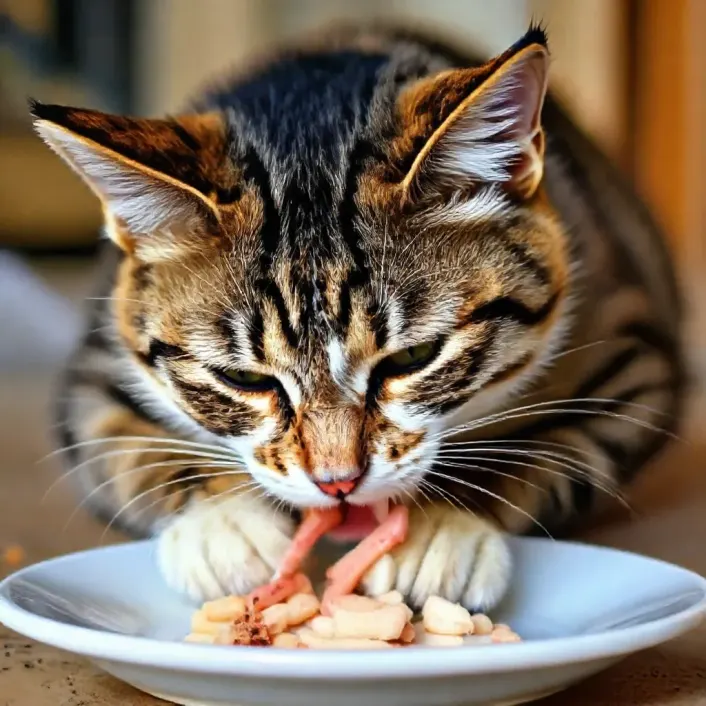As cat owners, we want the best for our felines-nutritious foods, a comfortable house, and endless love. It becomes a tempting thought, then, that the food we are giving them might contain unexpected-even shocking-ingredients.
You might have heard some rumors about sawdust being something used in cat food. Sounds frightening, right? Is it? If yes, why would they go around doing that?
Let us take a deeper plunge into the real truth about sawdust in pet food, how to tell, and if it is something to be afraid of.
Is There Sawdust in Cat Food?
A short answer: Not quite but with some explanation.
Pet food manufacturers do not state “sawdust” as an ingredient, but some of the brands use cellulose, mostly from wood pulp. This plant fiber could come from many sources from fruits to veggies to woods. Out of its processing form, it does not look anything like sawdust that you would find in the lumber yard, but its origin is basically the same: dead and minty-smelling flakes of wood.
So, no one is really scooping sawdust in the making of your cat food; rather, some brands do use processed wood fiber (cellulose) cheaply as a filler.
Why Put Wood Fiber Into Cat Food?
At first, this idea about wood being in cat food does seem outright ridiculous. But here are a couple of reasons for the addition of cellulose from the pet food manufacturers:
- Fiber Boost-Cats do not need fiber like we do, but it helps with digestion, prevents hairballs, and regulate bowel movement.
- Cheap Filler-Filler material cellulose is a cheap way to stir up food, such that less meat or good-quality ingredients are used.
- Texture/Consistency-This acts as a structuring ingredient for kibble and keeps wet food from being too runny.
- While fiber might be beneficial to some degree, the problem is that cellulose from wood is an indigestible filler-nothing more nutritionally beneficial for cats.
Is Wood-Based Cellulose Bad For Cats?
The issue with wood fibers in cat food is that cats being obligate carnivores thrive on proteins and fats derived from meat; their digestive system is not designed to handle cellulose, much less wood cellulose.
Excessive cellulose would give rise to:
- 1.Digestive problems-Excess fiber might give rise to bloating, gas, or diarrhea.
- 2.Reduction in nutrient absorption-It might inhibit absorption of protein and fat, causing possible deficiencies.
- 3.Empty Calorie-Since it is indigestible, it does not provide anything towards the health of your cat.
A little bit of fiber is all right. But when wood fiber is used as a primary filler simply for the cost-cutting that is really concerning.
Which Cat Foods Contain Cellulose?
Not many brands use cellulose, but many low-grade cheap products do. To discover if your cat food contains it, see the list of ingredients where:
- Cellulose
- Powdered cellulose
- Plant fiber
- Crude fiber (from cellulose sources)
Cellulose is used to cheapen fiber content by some mainstream brands, especially those that have a low price point. Some vet-recommended diets contain cellulose too, even in small amounts.
Proper prices and properly made, meat-based cat foods should not contain wood fiber.
How to Choose a Better Cat Food
If fillers are your concern, consider a few tips discussed in this section for better cat food selections:
- Prioritize Meat – The first ingredient should always be an animal protein: chicken, turkey, beef, or fish. By-products and fillers from plant sources are not what should be designated first.
- Avoid Cellulose – If cellulose is near the top of the list, it is probably one of the main ingredients in that food.
- Consider High-Protein, Low-Carb Foods – Cats need protein, not plant-based fillers, so find foods with at least 40 percent protein and very low in carbohydrates.
- Give Wet Food a Chance – Dry kibbles are mostly fillers, while good-quality wet foods have higher concentrations of protein and high water content.
- Check Labels Carefully – Marketing names such as “natural” or “premium” don’t always correlate to better quality. Always read the complete list of ingredients.
Final Thoughts: Are Cellulose Concerns Justified?
Not exactly “sawdust.” Cellulose in the cat food is a processed wood fiber that gives practically nil nutrition. Low amounts while not construed to create concern can be ingested for lower quality into the cat diet.
If your feline is to remain healthy, choose foods that are rich in high-quality proteins and devoid of fillers. A cat’s diet should primarily come from the meat itself, all in keeping with nature.
So, next time you go down the pet food aisle, try giving that label a good hard look. Your cat deserves the best—after all, he’s not just your pet; he’s your family.
Also Checkout:Can Cats Have Bee Pollen? A Natural Superfood or a Hidden Risk?
